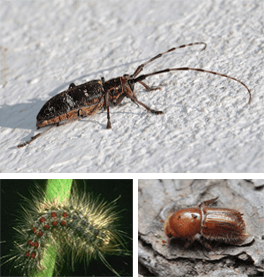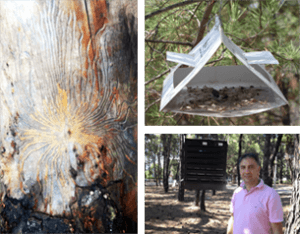Monitoring population fluctuations of established forest pest but also identification of the presence of invasive alien pests is best served by the use of an extensive network of pheromone traps.
 |
In forest ecosystems fire, pollution and animal grazing constitute the main problems leading to significant degradation. In addition to these, insect pests contribute to their further deterioration.
In Greece the most harmful organisms among those dwelling in forest ecosystems belong to the Insect Order. Due to the mild climate many insect pest, mostly coleopteran, periodically develop many generations per year leading to extremely large populations. In addition some of them serve as hosts to yet other harmful organisms (viruses, fungi, nematodes) that infect forest trees.
Among insects pests the pine recessionary moth (Thaumetopoea pityocampa) is the most common.
|
However, it has been established that forest pines and firs especially during long and dry seasons are subsequently infested by scores of bark-beetles (Scolytidade) resulting to their death over large areas. In oak forests the gypsy moth (Lymantria dispar) and the European oak leaf roller (Tortrix viridana) are the main pests. Conifers suffer by many bark beetles which lead to their decline and they eventually die out.
Symptoms: gallery formations, resin flow, bark discoloration around entry point. The use of pheromones and kairomones (attractants or repellents) for these pests plays significant role in their early detection but also in their management. |
 |



